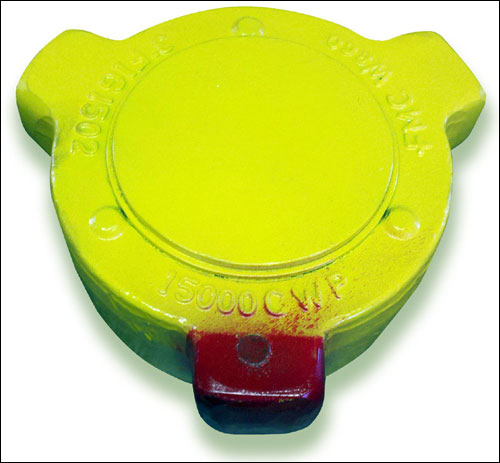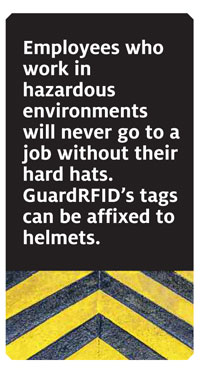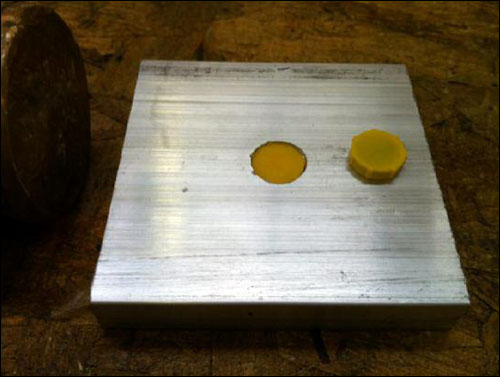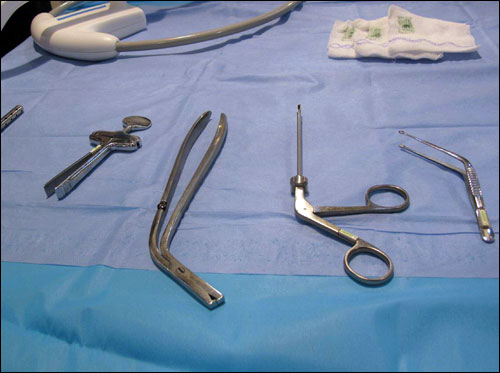In 2008, startup Mojix‘s STAR (Space Time Array Reader) system was voted best new product at RFID Journal LIVE!, RFID Journal‘s annual conference and exhibition (see Mojix Wins First-Ever ‘Best in Show’ Award at RFID Journal LIVE! 2008 and The Brightest Star). The system, which is installed on or in ceilings, was designed to read EPC Gen 2 passive ultrahigh-frequency tags in very large areas (an entire warehouse, for example), from great distances (hundreds of feet) and precisely identify the locations of tagged pallets, cases or items.
In 2012, Mojix introduced its next-generation STAR 3000 system. Since then, several other RFID providers have entered the so-called “overhead” reader arena. Checkpoint Systems, a provider of electronic article surveillance solutions, launched its Overhead EAS Solution in 2011, and a new version, Overhead 2.0, in 2013. Sekura, which develops security solutions for retailers, jumped into the market in 2012 with its Vertic RFID Overhead System. Impinj, which makes chips for handheld readers, announced its overhead solution, the Speedway xArray system, in 2013 (the xArray won the award for best new product at last year’s RFID Journal LIVE!—see Best in Show: RFID Gets xArray Vision).
Given the wide variety of fixed and handheld RFID readers available—and the myriad solutions developed to use these devices—when and why should a company consider an overhead reader? Are these readers designed for specific industries or applications? What unique features do they offer? How about cost? These are just a few of the questions companies that have deployed—or are planning to deploy—RFID have been asking.
Let’s examine these issues, but first, a couple of basics. All the overhead readers are designed to read passive EPC Gen 2 tags. Each overhead employs a phased array (also called antenna array), which divides a large area into separate read zones.
“Arrays are dynamic antenna systems using multiple radiating antenna elements that coordinate to create RF fields with a unique size, shape and direction,” says Tracy Hillstrom, senior product line manager at Impinj, a provider of both handheld and overhead RFID readers. “The array can be driven to change the read field over time, so it can be very responsive to the application requirements and environment. Most traditional antennas use a single antenna element, so you don’t get the diversity of read fields that are possible with an array.”
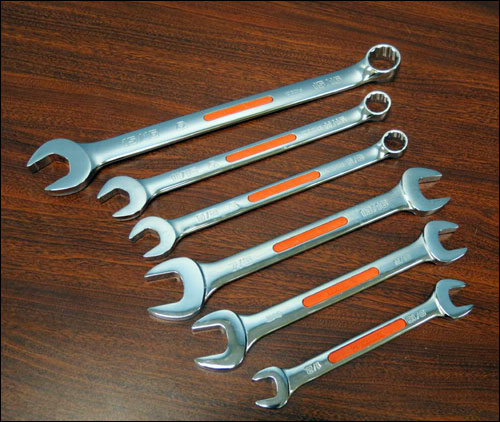
“An overhead RFID array is often considered when identifying the number, location and movement of assets within a space is necessary,” says Robert Zielinski, director of commercial marketing at CDO Technologies, a systems integrator, in Dayton, Ohio. “The benefit of an overhead system is that it automatically collects location data to determine travel; a traditional fixed reader is intended to capture data at a specific point and a handheld solution requires human involvement.”
Some overheads include software or a cloud-based server to manage the data. For specific product features, see the vendor table on opposite page.
When and Why?
Asset Management
Companies should consider an overhead solution when they need to track assets in large warehouses, yards or production areas in real time, says Shawn Manesh, senior VP of operations at Mojix. The STAR 3000 reader system can identify a passive tag from as far as 600 feet away, he says, making it suitable for asset tracking in physical areas of up to one million square feet. It is especially designed for industries with high-value goods, time-sensitive delivery or high cost of delivery errors, he adds.
Global oil and gas company BP is using Mojix’s STAR solution to locate goods as they enter a warehouse and to identify their location (see RFID, GPS Bring Visibility to Construction of BP Oil Platform). Daimler is testing the Mojix solution to track cars within its factory (see Daimler Sees Potential Benefits of Using RFID to Track Quality-Control). And Rewe supermarkets is rolling out Mojix’s STAR technology at its distribution centers to track the movements of returnable transport items (see RFID News Roundup: Rewe Supermarkets Expand Rollout of Mojix RFID Systems).
Hospitals are also considering overhead solutions to track and manage valuable assets, Impinj’s Hillstrom says. Many hospitals spend hundreds of thousands of dollars per year in rental fees for equipment, but workers can’t find what they need when they need it, she adds. While some hospitals are beginning to look to Wi-Fi-based real-time location systems as a solution to this problem, that technology falls short when a hospital wants to continuously track documents, charts, medicines and other small, low-cost items that can’t accept a bulky, active tag, she says.
With an overhead reader, hospitals can deploy an expanded traceability program that is fully automated, Hillstrom says. “Just imagine what a hospital could do in the area of safety if it knew that a particular medication had entered a patient room,” she says. “With the ability to check that the medication had actually been prescribed, without human intervention, compliance issues can be avoided. We have seen a great deal of interest in the xArray from health-care providers looking for a more cost-effective real-time location system capability.”
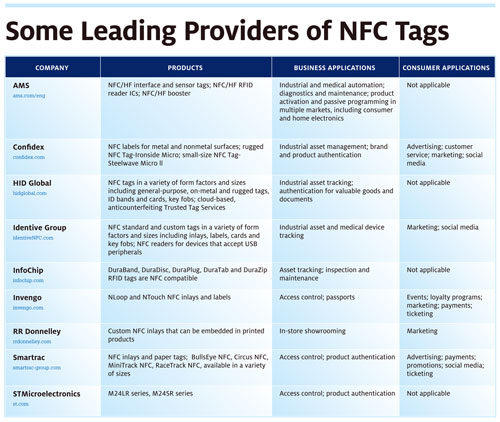
When and Why?
Inventory Management and Theft Prevention
Increasingly, apparel retailers are using a combination of fixed and handheld RFID readers to improve inventory management. Retailer American Apparel has deployed an overhead monitoring solution using Impinj’s product, and Impinj is working with solutions partners on overhead solutions based on xArray technology. “We have seen a great deal of interest in xArray from retailers seeking greater inventory visibility for omnichannel purposes.” Hillstrom says. “However, we are not at liberty to disclose [customer] information.”
Some retailers also want to extend the benefits of RFID technology to loss prevention, leveraging the same tag, says Alan Sherman, senior director of global marketing at Checkpoint Systems. Checkpoint’s Overhead is designed for implementation in stores with wide entrances and high ceilings that need protection at the exit door, such as specialty retail and department stores in malls. The overhead reader provides enhanced aesthetics because it can be flush-mounted to the ceiling or concealed within the ceiling, Sherman says.
The reader sends information about tagged items that have been read at the point of exit to the OAT Foundation Suite, which manages RFID inventory information in-store, Sherman says. “It enables retailers to know when, how many and what items were stolen,” he says. “The information from the point of exit can be used to update the status of stolen items and to remove those items from inventory.”
By knowing what was stolen, Sherman says, retailers can restock or reorder goods to maintain shelf availability. And by being immediately alerted to the theft of items, he adds, retailers can potentially prevent significant financial losses. Checkpoint says retail customers in the United States and Europe are using the system.
Sekura’s Vertic RFID Overhead System is also designed for theft prevention at exit doorways. It comes with Scout RFID software, an end-to-end inventory-management system with fraud- and theft-prevention capability, says Chris Napthine, RFID product manager. The Vertic system has been deployed by Wilkinson, a retail hardware store group in the United Kingdom, he says.
Professional thieves account for the majority of retail theft, Napthine says. “They know their way around every security system,” he says. “They know how to dodge the cameras and how to respond when approached, because it’s their livelihood.”
Scout RFID software linked to overhead readers and closed-circuit TV cameras strategically positioned at doorways near the readers can capture images of thieves as they walk out of a store with tagged items, Napthine says. “Scout software collects these images and tells you what items the thief is stealing and when it happened, on one page in real time,” he says. “The user can search by product code or product group to ascertain what is occurring over a defined period. Typically, thieves only need to be seen once to be able to prevent them when they return, as Scout provides undeniable proof. Facial recognition can be an integral part of the system functionality, and we are working toward this becoming a standard option.”
A Growing Market
While the overhead reader market is relatively small today, RFID providers and systems integrators believe these devices will play an important role in RFID solutions. As overhead technology matures and workflow processes progress, more vendors are likely to enter the market, CDO’s Zielinski says. “But not until sales volume nears critical mass,” he adds. “At this point, applications are very niche and projects are not enterprise considerations. Therefore, sales opportunities are limited and prices are still relatively high.”
Overhead reader costs vary greatly by manufacturer, Impinj’s Hillstrom says, from several thousand dollars to more than $10,000 each. Potential buyers, Zielinski says, should account for not just hardware prices, which manufacturers often quote, but also the cost of mounting and integration.
“The cost to a retailer for covering a sales floor with xArray compares favorably with what they pay for store lighting—just the fixtures,” Hillstrom says. “Because xArray runs off of PoE [Power over Ethernet], cost with installation is much less expensive.”
As the number of tagged items continues to grow, the variety of data-collection use cases and corresponding number of read points will continue to grow as well, Hillstrom says. “So, there will continue to be a need for handheld, fixed and overhead readers,” she says.
Handheld readers, for example, are ideal for specific workflows typically related to inventory management, such as cycle counting, Hillstrom says. “A handheld is like a flashlight in the dark, whereas installing overhead RFID readers is like turning on the lights,” she adds. “Once the lights are on, there is so much you can do. And it works even when employees have their hands full with more important duties, like helping customers, patients and clients.
“Overhead readers that cover large areas support a much richer and broader set of applications,” Hillstrom adds. “We expect that as businesses rely more heavily on RFID systems, they will desire seamless and fully automated data collection, which will naturally favor installations of overhead readers.”
Mojix’s Manesh agrees. “Handhelds and gate readers will not be replaced by overhead solutions, but instead will operate together in an enterprise, as each RFID solution meets a different customer need,” he says. “As RFID migrates to larger installations and enterprisewide with a majority of assets tagged, the need to automate RFID reads and provide visibility throughout facilities will require a mixture of products.”
EDITOR’S NOTE: At press time, Checkpoint Systems and Mojix announced a high-value apparel store was testing a new overhead real-time location solution developed for the retail industry (see Checkpoint Partners With Mojix to Offer Passive RTLS in Stores).

